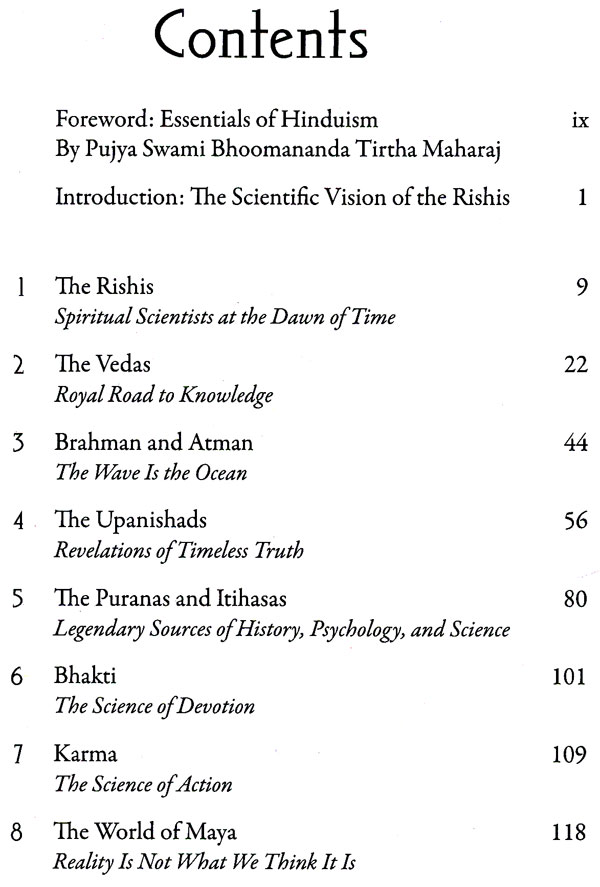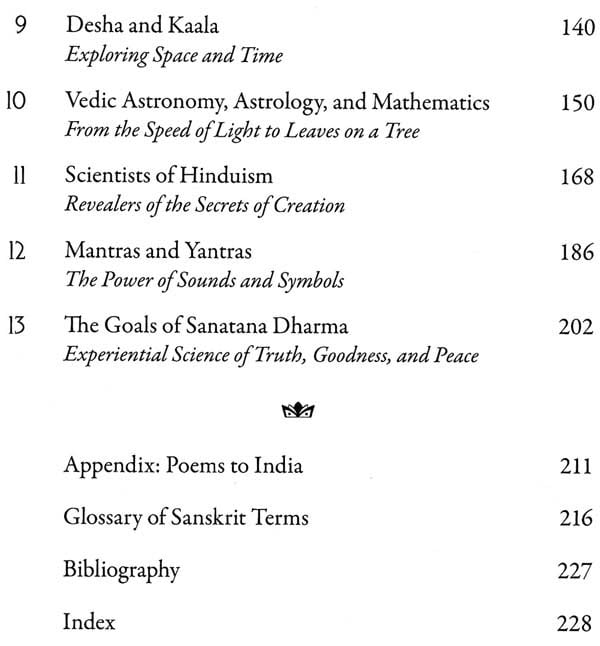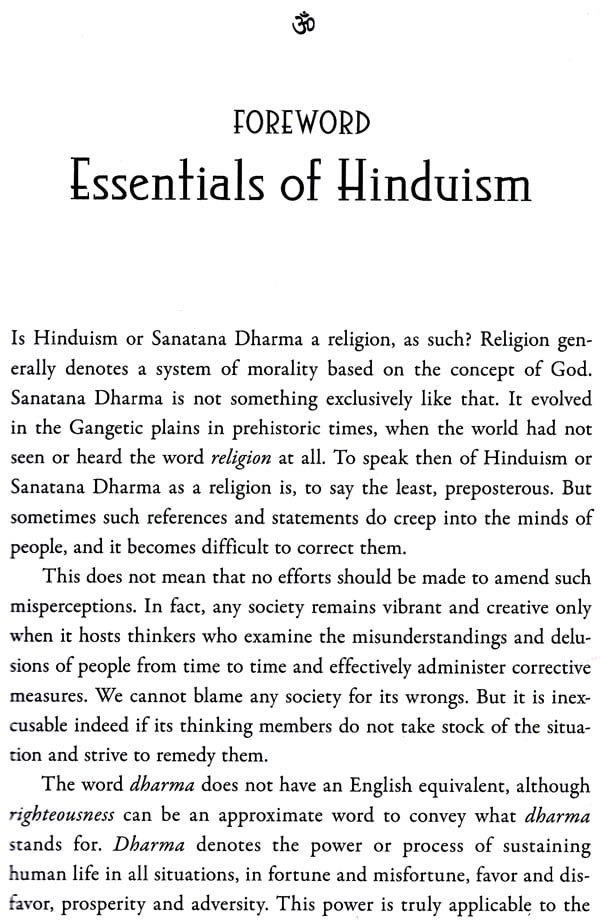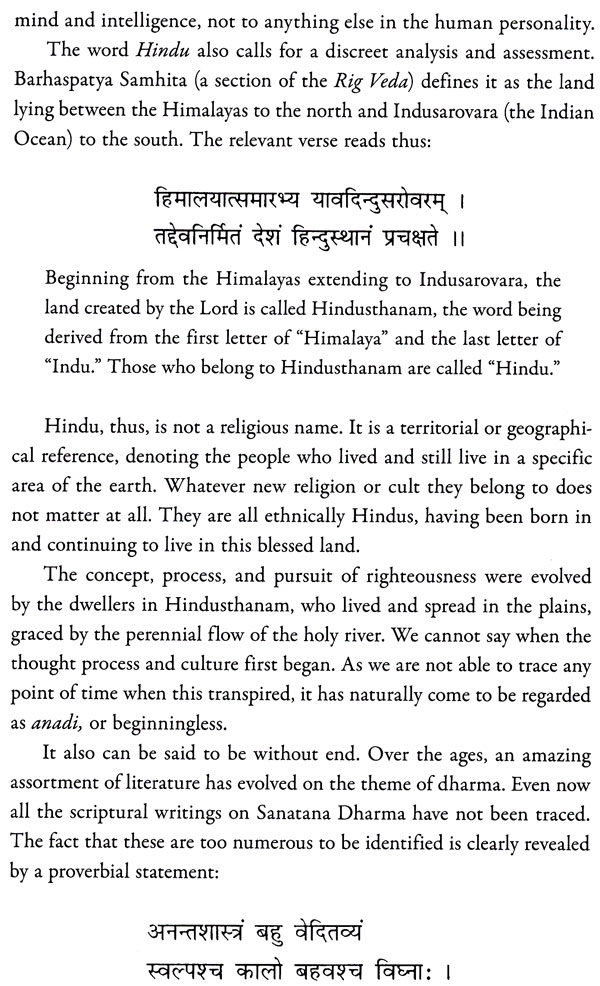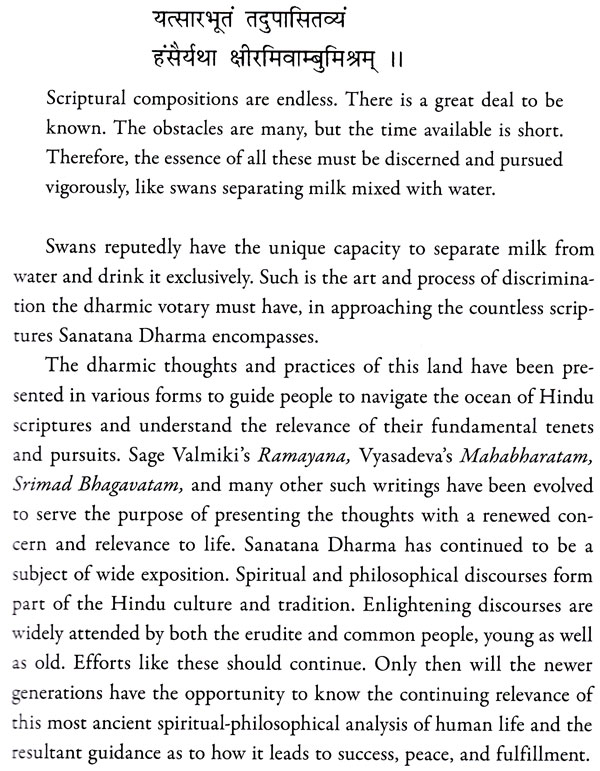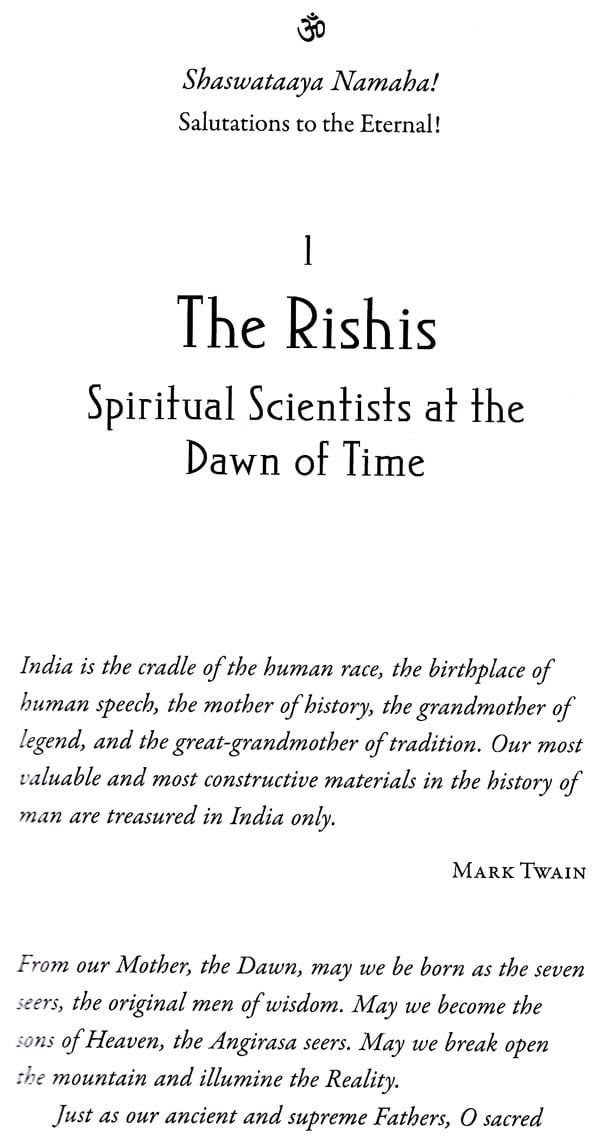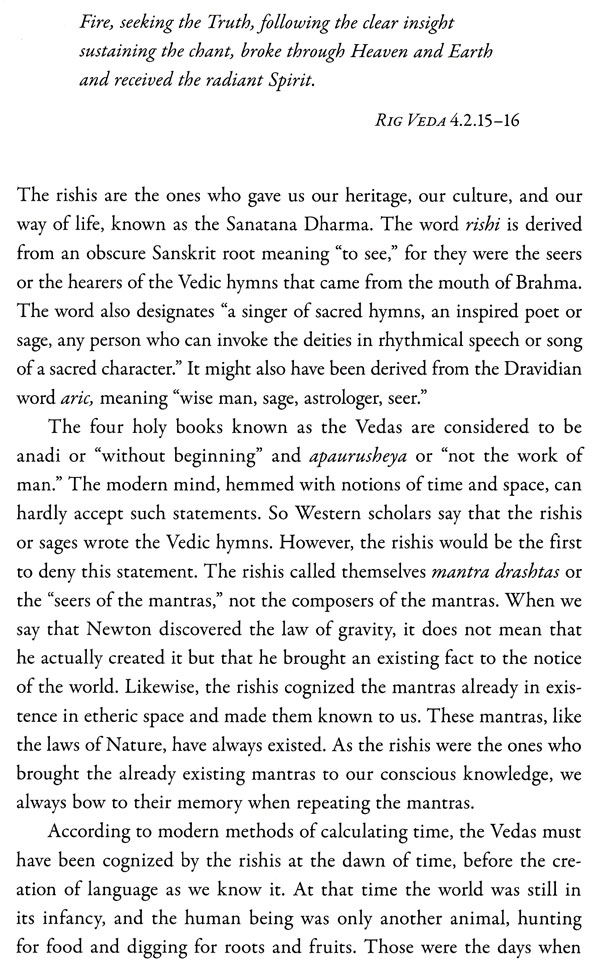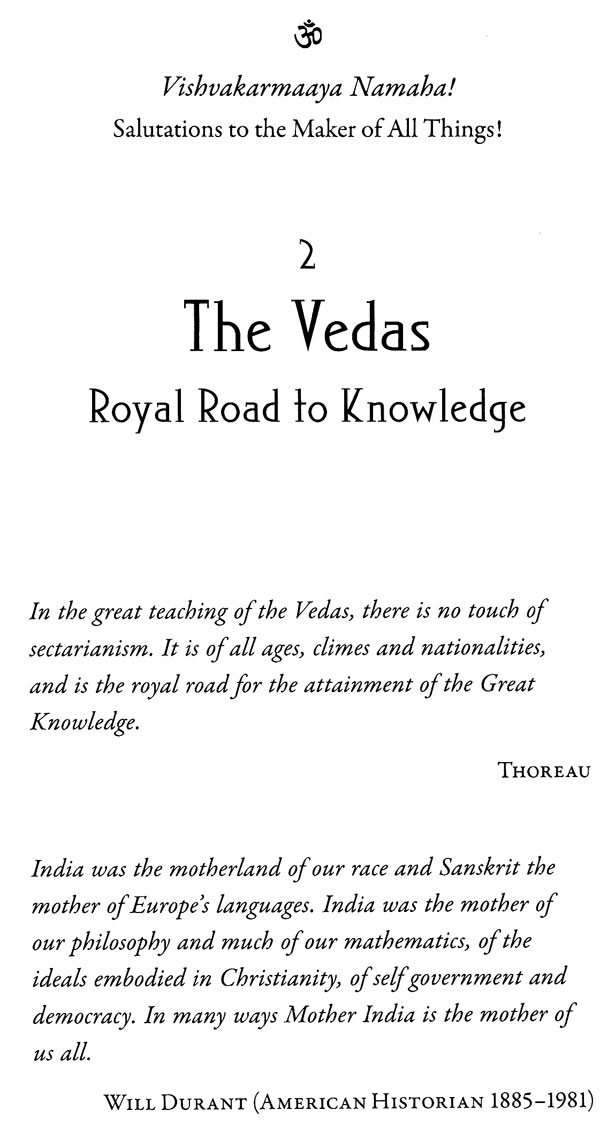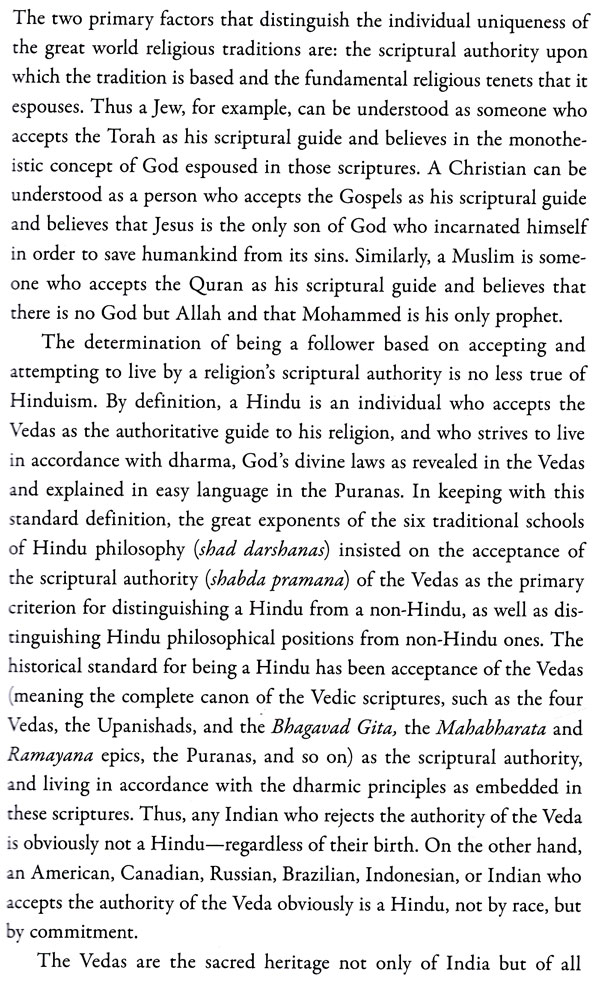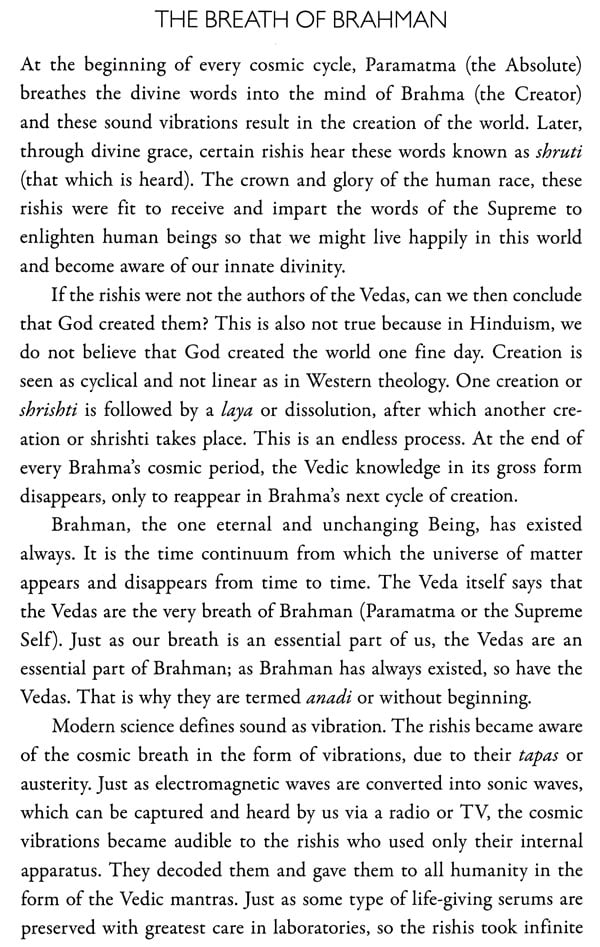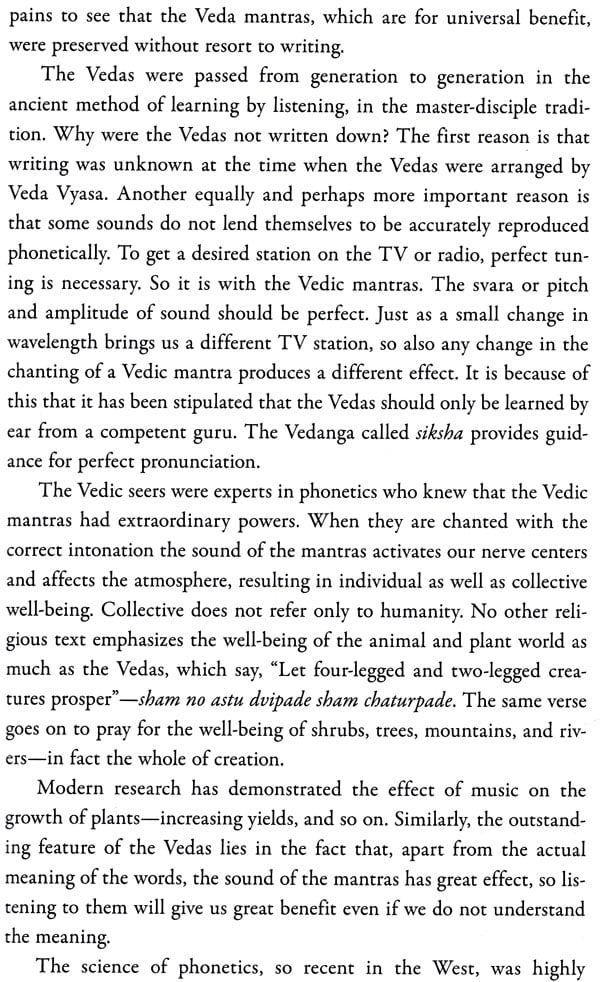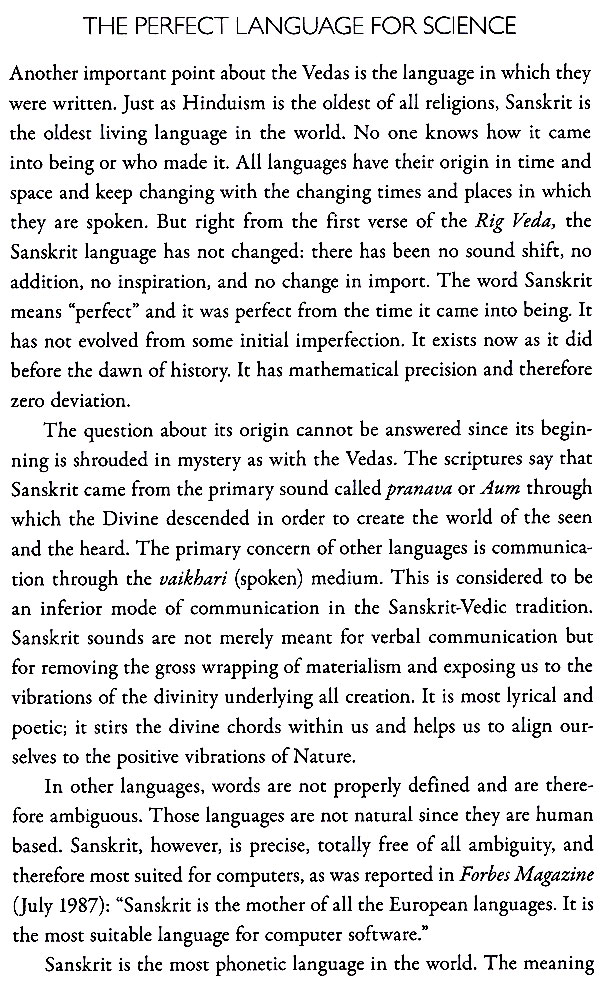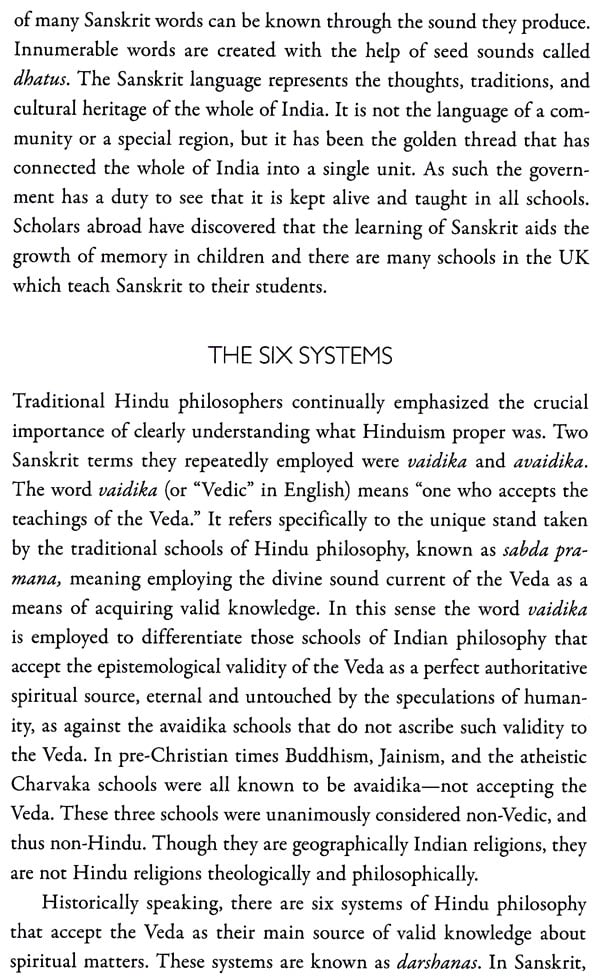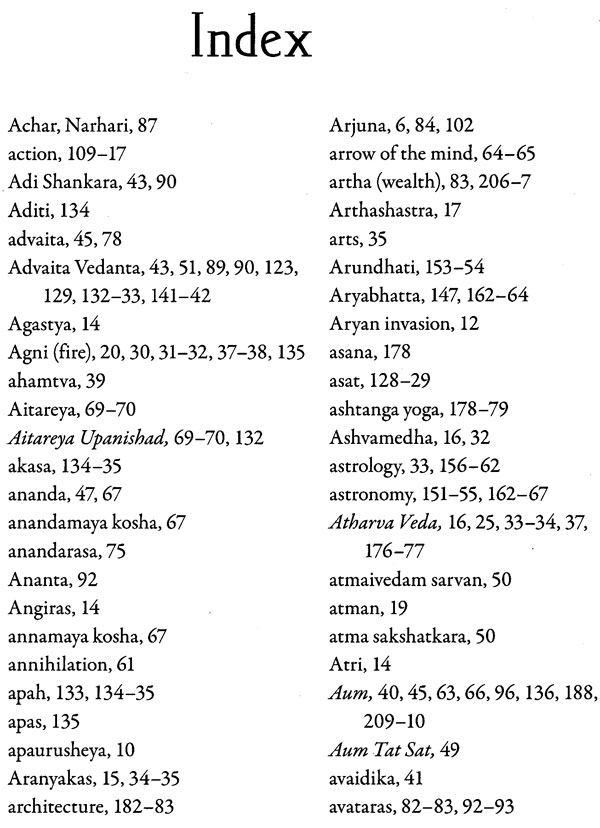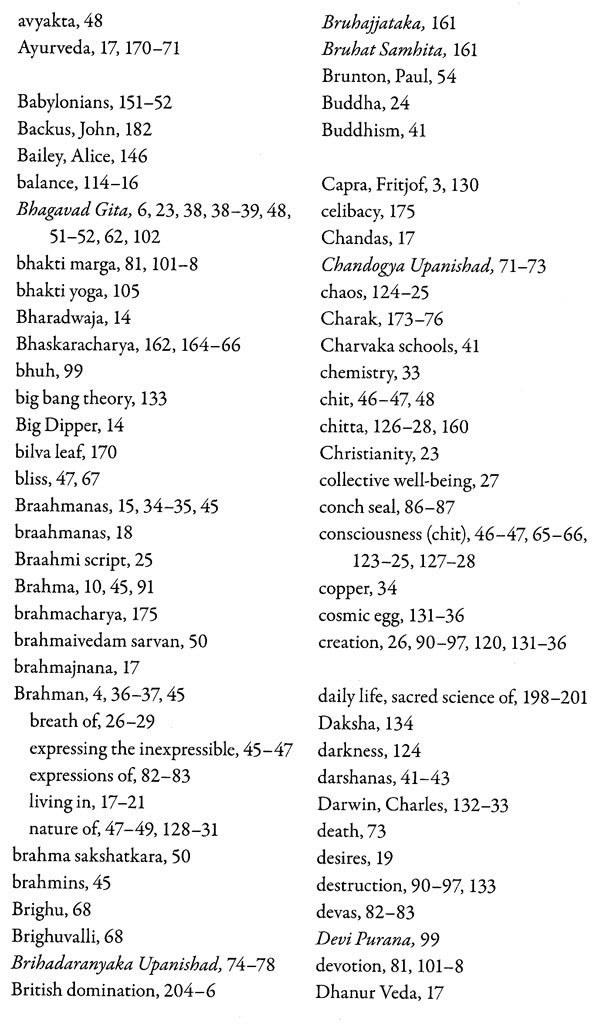
The Science of The Rishis (The Spiritual and Material Discoveries of The Ancient Stages of India)
Book Specification
| Item Code: | NAQ864 |
| Author: | Vanamali |
| Publisher: | Inner Traditions, Vermont |
| Language: | English |
| Edition: | 2013 |
| ISBN: | 9781620553862 |
| Pages: | 256 |
| Cover: | PAPERBACK |
| Other Details | 9.00 X 6.00 inch |
| Weight | 400 gm |
Book Description
Providing a complete introduction to the science of Sanatana Dharma, Vanamali reveals how the core concepts of Hinduism, including Brahman, atman, bhakti, karma, and reincarnation, relate to modern science and how the scientific discoveries of the ancient rishis have been recently rediscovered by the West. She examines the scientific principles within the classic stories and texts of India, including the Vedas, the Bhagavad Gita, the Upanishads, and the Puranas. Within the teachings of the ancient Puranic sages and saints such as Valmiki and Vyasa and legendary physicians and mathematician-philosophers such as Aryabhatta and Varahamihir, the author reveals great scientific truths of the ancient world, truths upheld by modern science, particularly quantum physics. She explores desha and kaala (space and time), Shankara and his philosophy of Advaita Vedanta, and the Hindu sciences of mathematics, astronomy, and Vedic astrology.
In illustrating the scientific basis of Hinduism and the discoveries of its sages, Vanamali provides a window into the depths of this most ancient spiritual way of life.
MATAJI DEVI VANAMALI has written 8 books on the gods of the Hindu pan-theon, including Shakti, Hanuman, Shiva, The Complete Life of Krishna, and The Complete Life of Rama, as well as translating the Bhagavad Gita. She is the founder and president of Vanamali Gita Yoga Ashram Trust, dedicated to sharing the wisdom of Sanatana Dharma and charitable service to children. She lives at the Vanamali ashram in Rishikesh, northern India.
After a study of some forty years and more of the great religions of the world, I find none so perfect, none so scientific, none so philosophic, and none so spiritual as the great religion known by the name of Hinduism. The more you know it, the more you will love it; the more you try to understand it, the more deeply you will value it. Annie besant
Satyam eva jayati naanrutam. Truth alone shall prevail, not falsehood. Mundaka upanishad
What is truth and how is it to be known? Time alone is the touchstone or-truth. The universe exists on truth and anything that is not founded on truth is automatically deleted by time. India has maintained the longest, unbroken continuity of civilization in the world. The ideas and beliefs of Hinduism-based on the eternal verities, satyam, ahimsa, and dharma, truth, nonviolence, and righteousness-have existed from time immemorial.
There was no antagonism between science and religion in India as there was in the West, since the religion is based on scientific truths. One ancient Hindu scripture, the Ishavasya Upanishad, says that there are two types of understanding, vidya and avidya. The interpretation given in the Upanishad is that vidya is eternal, experiential, spiritual knowledge or pats vidya, while avidya is external, experimental, material knowledge or apara vidya. We should make use of the second to guide our lives so that we are led to the first. Unless both these types of knowledge are integrated into our lives, we will end up being blind or lame, as Einstein put it.
One who believes that science alone can take away all the miseries of life is like a blind man entering a dark room. However, one who believes that escaping the miseries of life can only be achieved by chanting mantras in the solitude of a cave is also entering blinding darkness. Hinduism has never held that blind faith can lead to liberation or that science alone can give you a utopian life. Both science and faith are necessary for a fulfilled life.
Most of the Westerners who came to India in the early part of the last century were totally incapable of appreciating the wonders of this ancient knowledge. This is because Hinduism is a most obscure and difficult religion to understand. What is generally exposed to the common eye is only the surface of a deep pond, which contains a treasure of gems that are not easily revealed to the cursory glance. Hinduism is as difficult for the uninitiated to understand as quantum physics for the layperson.
Actually, the word Hinduism is a misnomer. It was the name given by Westerners to those who lived below the Indus River. The actual name of Hinduism is Sanatana Dharma or "the way of eternal righteousness." This is the ancient law by which this cosmos has been created, sustained, and destroyed.
People have asked me how I dared to write about physics, which is an alien subject for me. My answer is that my in-depth knowledge of Hinduism has made it easy for me to understand quantum physics. The first time I read The Tao of Physics by Fritjof Capra, I was struck with wonder, for I instinctively understood what the physicist was trying to say. At the same time, many of the abstruse points in the Bhagavad Gita suddenly became crystal clear to me. Later, when I went through the Puranas (stories of gods written by the sage Vyasa), I was again struck at the amazing ways in which the great saints of the Puranas-Vyasa and Valmiki-had woven great scientific truths into their stories. These scientific truths are not what the ancient Western world believed to be true but the truths of the most modern kind-that of quantum physics.
One fact hit me like a sledgehammer-that right from the Vedas she most ancient scriptures) to the Puranas, everything was completely scientific. For obvious reasons the sages did not expose this fact to the common eye. If we of the modern age, who are quite used to so many technical facilities, which we accept as commonplace, find it impossible to understand quantum physics, how much more would it have been impossible for people to understand what the sages were trying to say at a time when even things like ordinary matches were unheard of!
Sanatana Dharma is a living relic of the ancient past of not just India but the past of the whole history of humanity. Many of the forms of Hindu culture today are the same as they were more than ten thousand years ago. The ancient world never died in India. It still remains and can be contacted everywhere. The scientists of this culture were known as rishis. The credit for ensuring that this culture never died goes to them. They were both philosopher-saints and scientists and existed from the dawn of the Indian civilization, which is the dawn of time. The sages desired that humanity should progress materially as well as through a constant inner renewal of the cosmic law of righteousness, guided by the wisdom embedded in our scriptures. What exactly is science? Science is something that tries to discover
**Contents and Sample Pages**
